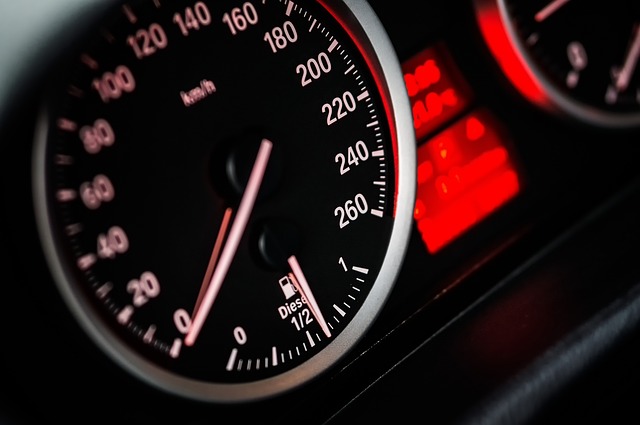Looking to register your car in California? This guide walks you through the entire process, from understanding key requirements to completing the registration application. First, gather essential documents for DMV vin verification, including proof of ownership and insurance. Then, conduct a VIN check at the DMV to ensure your vehicle’s authenticity. Next, fill out the registration form and pay associated fees. Finally, receive your official registration documents and hit the road legally.
- Understand the Requirements for Car Registration in California
- Gather Necessary Documents for VIN Verification
- Perform a Vehicle Identification Number (VIN) Check at the DMV
- Complete the Registration Application Process
- Pay the Required Fees and Receive Your Registration Documents
Understand the Requirements for Car Registration in California

Before registering your car in California, it’s crucial to understand the requirements for car registration. The California Department of Motor Vehicles (DMV) mandates several steps, including completing an application form, providing valid identification, and proving vehicle ownership through a Vehicle Identification Number (VIN) verification process. This involves ensuring that the VIN on the title matches the one inscribed on the vehicle’s chassis.
A mobile vin verifier or mobile vin inspection service can streamline this process by allowing you to complete the VIN verification online or over the phone. This method is particularly convenient, as it saves you a trip to the DMV and reduces potential delays caused by paper work or staff shortages. By understanding these requirements and leveraging available tools like mobile vin inspectors, you can efficiently navigate the car registration process in California.
Gather Necessary Documents for VIN Verification

Before you can register your car in California, you’ll need to undergo a critical step known as DMV VIN verification. This process requires gathering essential documents that prove ownership and ensure vehicle authenticity. Start by collecting your vehicle’s unique identifier—the Vehicle Identification Number (VIN). You can find this on the driver-side door frame or in the vehicle’s manual. Next, gather important paperwork such as the title, registration certificate, proof of insurance, and a valid driver’s license.
Additionally, consider using tools like mobile vin verifiers for convenience. These applications streamline the verification process by enabling you to confirm your VIN’s legitimacy digitally. This modern approach, particularly useful for those with busy schedules or limited mobility, enhances efficiency while ensuring compliance with California’s registration requirements.
Perform a Vehicle Identification Number (VIN) Check at the DMV

Before registering your car in California, it’s crucial to perform a Vehicle Identification Number (VIN) check at the DMV. This step is essential for ensuring that the vehicle’s history is clean and free from any legal or safety issues. The process is straightforward; you’ll need to provide your VIN to the DMV, which they will verify against their records. This verification ensures the vehicle meets all necessary standards and has not been reported as stolen or had previous damage that could compromise its safety.
One convenient option available in California is using a mobile vin inspection or mobile vin verifier service. These services send a professional to your location to perform the VIN check, saving you time and effort. This alternative is especially beneficial if you’re busy or have difficulty navigating the DMV. With just a few details from your vehicle, these mobile vin verification services provide accurate and timely results, helping you streamline the registration process.
Complete the Registration Application Process

Completing the registration application process is a crucial step when registering your car in California. You’ll need to gather essential documents and information before starting. First, obtain a Vehicle Identification Number (VIN) inspection or mobile VIN verification from an authorized service center or dealer. This step ensures accuracy and helps prevent fraud. The California Department of Motor Vehicles (DMV) requires this verification as part of the registration process.
Next, fill out the Registration Application form, providing details like your personal information, vehicle specifications, ownership history, and insurance details. Ensure all information is accurate and up-to-date. After completing the form, submit it along with the required fees and your VIN inspection results to a DMV field office or by mail. A successful vin inspection ensures a smooth registration process, so make sure this step is completed correctly before proceeding.
Pay the Required Fees and Receive Your Registration Documents

After submitting your application and relevant documents, it’s time to settle the fees associated with registering your vehicle in California. The California Department of Motor Vehicles (DMV) charges a base fee for registration, which varies based on the type of vehicle you own. Additionally, there may be other charges applicable, such as a title transfer fee or a safety inspection fee. Ensure you understand all the costs involved before proceeding.
Once your application is approved, the DMV will conduct a VIN (Vehicle Identification Number) verification to ensure the authenticity of your car. This process can often be facilitated by a mobile vin inspection or mobile vin verifier service, which provides convenience and efficiency. Upon successful verification, you’ll receive your registration documents, allowing you to legally operate your vehicle on California roads.
Registering your car in California involves several straightforward steps. By understanding the requirements, gathering essential documents for a DMV VIN verification, completing the registration application process, and paying the necessary fees, you can ensure a smooth and efficient experience. Remember to keep your registration documents up to date to avoid any legal issues on California’s roads.
